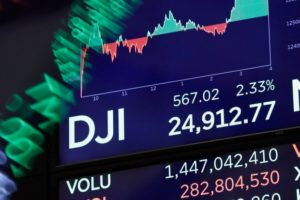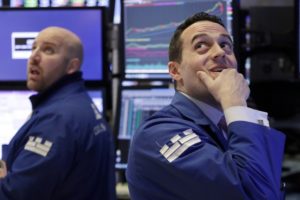It’s natural to get nervous when the markets zig and zag, but experts say doing nothing can be best

Sometimes markets are in need of a good reality check. And this is definitely one of those times, says wealth management advisor Susan Latremoille.
“We gotta know that trees don’t grow to the sky, the market doesn’t go up forever,” said Latremoille, who heads up the Toronto-based Latremoille Group, a wealth management firm.
“When days like this come along, nobody likes it, but it is a fact of life. It is part of the investment landscape to have volatility.”
It’s natural to get emotional when red ink is flowing everywhere, she said. It’s especially true when investors have grown accustomed to a steady, calm market, and are not used to such volatility.
Do nothing
Despite all the recent turmoil, which resulted in the largest daily point drop in the stock market’s history, investors should not panic.
The best course of action, really, is to do nothing, Latremoille said.
“The worst thing to do is to get all panicky and knee-jerk and either call your advisor and tell them to sell everything or, if you’re a do-it-yourself investor, to press that button that gets you out.”
The losses, she said, are strictly on paper. “Until you sell,” she said. “Then the loss is crystallized at that point.”
Those losses began Friday, with the Dow Jones industrial average losing 666 points, or 2.5 per cent. That turbulence continued Monday, with the Dow plunging by 1,175 points, a one-day total drop record, translating to a 4.6 per cent decrease. Combining Friday and Monday, the market had plunged by seven per cent.
But for a market correction to occur, stock value technically has to drop 10 per cent from a recent record high.
“Market corrections are like vegetables,” Latremoille said. “They don’t always taste good, but they’re good for you.”

The market dipped into correction territory early Tuesday when the Dow Jones, which is made up of 30 big companies, dropped in the morning session by 569 points. But it rallied later that day, finishing up with a gain of 567 points.
The S&P 500, an index of 505 stocks issued by large companies, also rallied back Tuesday, gaining 1.8 per cent after losing 4.1 per cent the day before, its largest daily plunge since August 2011.
So while not a correction, it was certainly a significant adjustment, or blip. The steep drops Friday and Monday wiped out the gains the Dow and S&P 500 made since the beginning of the year.
Yet the while the point drops may appear large, the percentage change were relatively minor.
“The percentage changes were not nearly as big as the numerical values,” said Diane Swonk, chief economist with audit firm Grant Thornton. “The percentage changes in the market, although big enough, they were nothing compared to the kinds of … moves we have in the past.”
Think back to Black Monday: On Monday, Oct. 19, 1987, the market plunged nearly 23 per cent.
‘Catches your eye’
“It’s just that we’re getting [to] such lofty levels, a 1,000-point move means something because it catches your eye,” Swonk said.
The markets have a had a great run with very little — if any — downside volatility, said Greg McBride, chief financial analyst at the New York based Bankrate.com, a consumer financial services company.
Markets tend to undergo a correction every 12 to 18 months. The last correction was 24 months ago, meaning the market was overdue, McBride said.
“The markets are kind of throwing a hissy fit,” he said.
Part of that hissy fit, he said, has to do with a reaction to higher interest rates and inflation. Last week, the Federal Reserve signalled it would continue raising interest rates. Meanwhile, the monthly U.S. employment report came out indicating continued wage growth and higher inflation. Both these developments make investors squeamish, McBride said.
Positive for stocks in long term
The irony, he said, is that higher interest rates and inflation are all signs of a strong economy.
“The underlying economic fundamentals are better now than at any point in the last decade,” he said. “All of which is very positive for stocks in the long term.”

Eric Kirzner, a professor of finance at the University of Toronto’s Rotman School of Management, described the situation as a “nice perfect storm.”
Prolonged strong markets combined with strong economic news, paradoxically, frightened people worried about rising interest rates and an overheated economy, he said.
The market, he said, may not remain as strong as it has been in the past, but the most recent developments are certainly not a long-term reversal.
Yet he can understand why people who are in their 60s and 70s, looking at retirement, get frightened during times like these.
“But if you get frightened, it probably means you didn’t have the right balance in your accounts to start with.”
“The takeaway is if you had a nice balanced portfolio and if you had done the right thing — a good mix of safety income and growth — it shouldn’t affect you to any great degree.”


